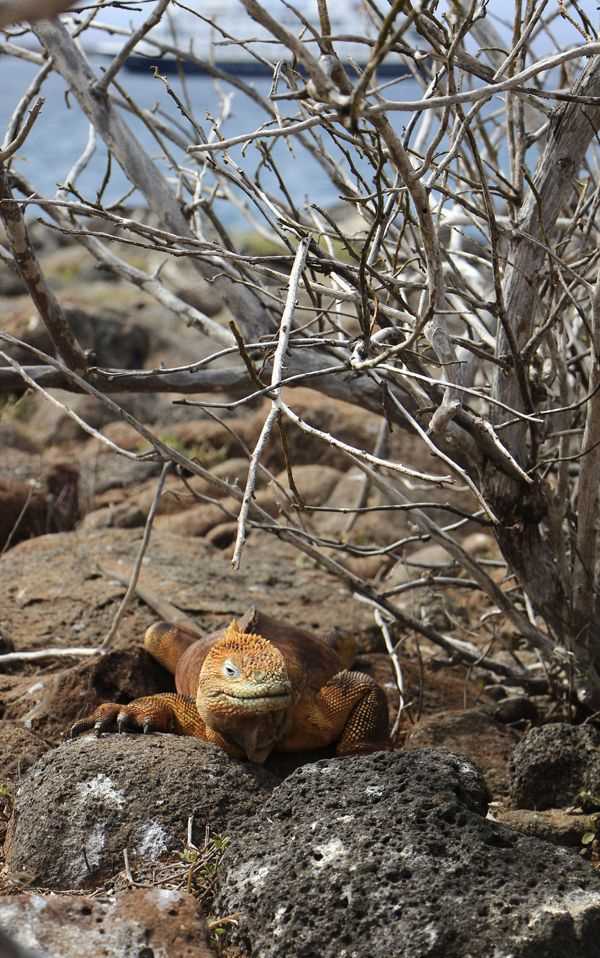In the center of Galapagos, North Seymour is one of the most diverse islands in terms of fauna but poor in vegetation due to its low elevation.
Here reside some species of sea birds; among others are the two species of frigates and one species of booby. Magnificent and great frigate have both chosen the island to live and nest for finding fish in the surrounding waters is relatively easy and there is plenty for both. There are many males this time with their red pouches fully up to attract the females, although others are already engaged in incubation or taking care of the young as well as feeding.
In the same area, blue-footed boobies nest. Another attraction is the Land iguana; a dinosaur-looking reptile which lives on the island since the 1930’s when rescued from almost extinction due to predation and man activities on the neighbor island of Baltra. There were plenty of them showing a vast and fast natural recovery.
One of the best attractions of the Galapagos is without a doubt the sea lion, enigmatic creature well known for having such a charm that people love taking pictures of them no matter how many are already taken. This and more makes this island a wonderful site for wildlife.
After some navigation, we arrive to the island of Rabida, which stands out from the others for having a red color sand due to the large amount of iron oxide.
First thing we do here is to explore the fabulous marine life of the Galapagos. The group id divided in two. For the most experience do deep water snorkel along the shore from the zodiac, the less keen go to the beach for a more gentle start.
Both equally amazing for the variety and exuberance of its content.
After this, we get ready for a sunset stroll along the beach for landscape and wildlife. Sea lions are the best hosts.







